History
Estimates Based on Facts: ‘200,000 Comfort Women’ Defies Math
Published
6 years agoon
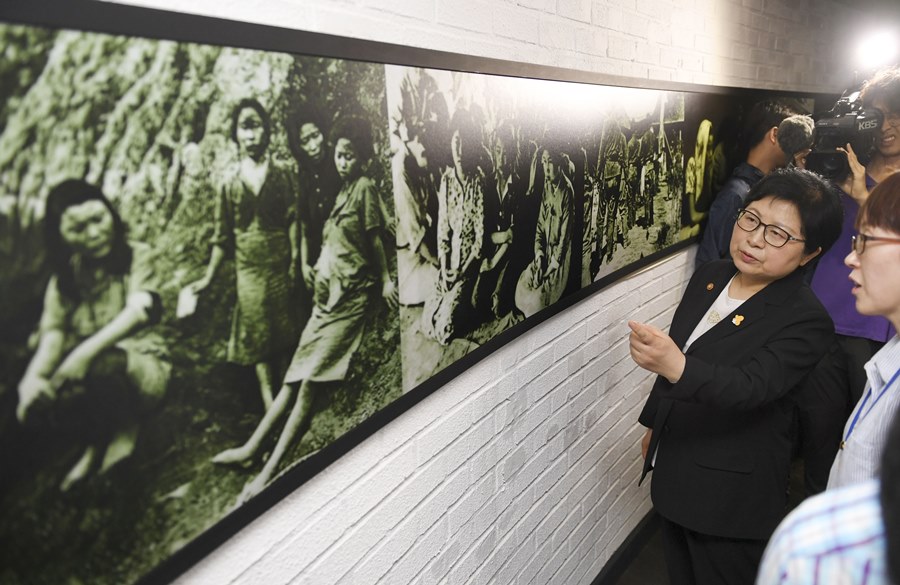
This piece was first published under the title “Seoul University professor denied the theory of comfort women as the sex slave” in Monthly Hanada Selection: Hopeless South Korea and Tragic President Park Geun-hye, a special December 2016 edition of the Japanese monthly magazine. JAPAN Forward is serializing it.
(Conclusion)
Part 1: Why Korean Professor Believes Comfort Women Were Not Sex Slaves
Part 2: Korea Had Long History of Trafficking in Women—Even Before the Japanese Came
The Diary of a Comfort Woman Manager
Seoul National University professor emeritus of economics Lee Young-hoon has noted there were many Korean comfort station managers listed in a volume titled List of Koreans in China, 1942. At a comfort station called Asahikan in particular, there was not only a Korean manager, but also nine Korean comfort women. He showed a photograph of this document, which lists the names and even the family registry information of each individual.
Lee said that, during this period, it was not considered shameful to work as a comfort station manager or even as a comfort woman. It was for this reason the women likely had their names listed in the volume.
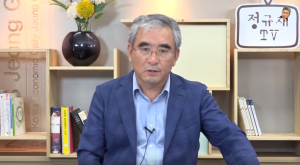
His final argument, on the issue of the Japanese military comfort women, concerned the comfort women’s lifestyle itself. While there are fewer documents on this particular aspect, Lee found the diary of a Korean man back in 2012, that previously worked at reception desks for comfort stations located in Burma and Singapore.
The professor teamed up with several other researchers to conduct a detailed analysis of this diary, which had been published in South Korea under the title “Diary of a Manager of a Japanese Comfort Station.” Lee then launched into a thorough explanation of this diary.
The diary covers a period spanning from 1943 to 1944, detailing the life of a comfort station manager. The diary’s author was born in 1905 and earned a considerable sum as a notary public. He also sent his concubine to work as a prostitute at an inn.
His notary public business however, began to decline in 1940. In that same year, he also loaned 4,000 yen to a Korean human trafficking broker who left without repaying the money. In financially dire straits, he traveled to Burma with his concubine’s son to run a comfort station in July of 1942.
Unfortunately, the diary section for 1942—during which time he recruited comfort women—has been lost. The diary author worked the comfort station reception desk in a position of middle management. Despite the missing section, the following points have become clear from reading the diary.
Licensed Prostitution Managed by Military
The comfort stations were, in fact, managed by the military. Each comfort woman was required to submit a report to the military near the conclusion of every month. A ledger was kept showing the sales figures for each comfort woman—allowing them to complete said monthly reports. The military decided on the guidelines for patrons and on the fees to be charged. The military ran a public-management system, which was in effect a direct-management program carried out under very stringent rules.
The licensed prostitution system in Korea was, in effect, transferred to military units and/or comfort stations. When a woman wanted to quit, she brought a permission form to the unit and gave notice of her intention, after which a cessation of business notification was issued.
While it is possible to criticize the military’s management from an ethical perspective, it should nonetheless be recognized the military was rather unsparing in management of health and hygiene, while also protecting the comfort women from violence and/or abduction. In the two years the diary author worked at comfort stations, there was no reported incidence of violence. Part of the diary author’s job was to transfer money to the hometowns of comfort women at their request, which he did at the branch offices of the Yokohama Ginko bank in Rangoon and Singapore. After paying off their advance money, the women were able to send funds back to their families at home.
The diary author himself earned 43,000 yen in two years’ time—an enormous sum when one considers the average monthly worker’s salary during that period of time was just 40 yen. The author managed an orchard after returning home, and also served on the board of a private elementary school.
Lee argued that the comfort stations were examples of “the licensed prostitution system transferred to military units.”
How Were Comfort Stations Run?
“The brokers recruited women by means of employment fraud as well as by human trafficking, and ran what amounted to a licensed prostitution system under the powerful control of the Japanese military,” Lee said.
He further explained:
This system shared the special characteristics of the licensed prostitution system in that the women were not imprisoned or subjected to abuse, the women had to obtain permission to work as prostitutes in accordance with the law, and also had to provide a letter of consent stamped by their mother and father, a proof of the authenticity of the seal used on the letter, as well as a certified true copy of their family registry along with other documents. All of that documentation was in place.
After the paperwork was turned in, the women received permission to commence business. Once their contract period was up, they submitted a notification of cessation of operations and returned home. In a single year, 1944, among the 20 Korean comfort women working at the comfort station which also employed the diary author, 14 women went back to their hometowns. When women went home, others came to take their place. It is proof that these women were not being held against their will.
Lee was subjected to intense criticism as a proponent of the theory that the comfort women were licensed prostitutes after mentioning US military comfort women during a television debate in 2004.
At the time, Lee had been an adherent of the theory that comfort women were sex slaves, so the ensuing criticism was the result of his words being misunderstood. In his 2016 YouTube lecture, however, Lee openly and unequivocally stated that comfort women were licensed prostitutes under military management. I have nothing aside from heartfelt admiration for the scholarly courage Lee displayed.
Yoshimi Yoshiaki’s Book
Lee concluded his essay with a discussion of how one should understand the women at comfort stations under such conditions. This part is very important and what follows is a literal translation:
This question is an extremely difficult one. It is a political question, one that has been much debated. The most well-known Japanese researcher on this question, Yoshimi Yoshiaki, says that these women were sex slaves. Many South Korean researchers also follow the theory that these women were sex slaves. I too, in my 2007 book, said that these women were sex slaves. Reading Yoshimi Yoshiaki’s books and essays, I thought he was right, and I once supported the theory that the comfort women were sex slaves.
If the women had had no freedom of movement, had been confined, had been beaten and subjected to violence on a daily basis, and had received almost no compensation for their work, then this would be proof that they were slaves. When Yoshimi Yoshiaki argued that they were sex slaves, he placed the greatest emphasis on their not having freedom of movement, not having personal freedom. They could not come and go as they pleased, Yoshimi argued, and he gave several examples of this.
However, I have studied a wide variety of materials. As a result, I have come to doubt that the comfort women had a daily level of personal restriction any different from that under the licensed prostitution system.
As I said earlier, prostitutes were not able to live outside of the rental property, and were not free to leave the region. I doubt that the comfort women had more than that level, whether their restrictions exceeded those particular to that occupation.
Even in Mun Ok-ju’s memorandum and in the diary of the comfort station manager which I introduced, we read that twice a month there were days off. On days off, there was freedom to come and go. Mun Ok-ju says that even now, when she closes her eyes, she can recall being on the city streets of Rangoon. She enjoyed a wide variety of shopping experiences in a foreign country. It was not possible to leave the comfort station while working, but on days off it was possible to leave.
It was not possible to leave freely before the contract period was up. This was the extent of their personal restriction. And, once the contract period was up, then, having fulfilled certain conditions, many people filed notifications of cessation of operations, which were accepted.
Yoshimi seems not to have been aware of this. I just went back and looked at Yoshimi’s book again. His evidence is extremely fragmented and incomplete. In this sense, I wish to say that the evidence is badly lacking that the comfort women were sex slaves under personal imprisonment.
Next is the question of whether the comfort women received payment or not. On this point, there is not a basic overlap with the principles of the licensed prostitution system.
Because of the question of military morale and related issues, the military was not in a position to tolerate the use of personal violence inside the comfort stations. In wartime conditions, it is not possible to allow the use of personal violence—this is what I want to say. Look at any comfort station diary—there is no personal violence. In Mun Ok-ju’s autobiography, as well, there is no mention whatsoever of her having been beaten by her employer or bullied for her advance money.
It was an extremely labor-intensive, high-paying occupation. So, advance-money payments of 200 yen, 300, 1,000 yen or so would not have been enough to act as a yoke binding one’s person. It was easy to repay such amounts. In the wire-transfer sums recorded in the diary I mentioned earlier, one woman sent 12,000 yen home, and Mun Ok-ju says she sent 5,000 yen home and had 25,000 yen in military savings.

In this kind of highly labor-intensive, high-paying occupation, there was no way to make the women into debt slaves. Of course, some individual women might have been in such a situation. But it was impossible to make this the common lot.
Also, in a certain sense I am an expert on slavery. Because I have researched Korean servants. I have read many books on slaves. The essence of a slave is that they have no legal abilities. Their humanity is denied in law—they are not human beings in the eyes of the law. If you beat them, they cannot sue you. If their mother or father is beaten to death, they cannot press charges against you in court.
During the slavery period in the United States, a slave could not be a witness in court even if he or she had witnessed the scene of a murder. Because the slave was not a human being. Even if they said they had seen a certain white person in the act of committing a crime, they could not be called as a witness in court. Thus, slaves have no legal standing at all, and they are also denied the social status that would allow them to exercise any legal rights. This is what a slave is.
It is difficult to say that the comfort women were the same as slaves. They were in a very weak position, to be sure. But it cannot be said that they had been stripped of their legal rights, that they had no rights whatsoever.
For example, in Mun Ok-ju’s case, I recently read and was shocked to learn that a Japanese soldier who came to the comfort station was acting like a hooligan. He was a bad man, and he took out his sword and threatened Mun with it. And she stood up to him. Mun Ok-ju is an astounding person. She stood up to him, took his sword away from him, and stabbed the soldier with his own sword. The soldier was stabbed in the chest and he died.
When this happened, Mun was court-martialed. Mun had argued that she was a military personnel, so she was tried as such. Mun Ok-ju told the court that that man had first been acting like a hooligan, had come to the comfort station brandishing his sword. “Was that a good thing?” she asked. She argued that she acted in self-defense, and she was found not guilty.
What I want to say is that, if Mun had truly been a slave, then she would not have had any right to a trial. However, she had a trial, and her self-defense argument was accepted, and the court-martial handed down a verdict of not guilty. Again, then, I say that, on many different points, we must rethink the theory that the comfort women were sex slaves.
The word “slave” very easily causes misunderstandings. So I argue that when American scholars use the word “slave” to describe Chosen Period servants, they must use abundant caution.
The term “sex slave” is an extremely inflammatory expression. In the strict sense, I am very dubious whether it meets academic requirements or not.
Estimated Number of Comfort Women
Let us now discuss the specific number of Korean comfort women. According to textbooks and scholars in South Korea, that number is 200,000, but Professor Lee rejects this figure.
“If there were 200,000 Korean comfort women, then this number would become much larger once one factored in the Japanese and Chinese comfort women. It goes without saying that a Japanese military having 2.5 million troops could not have taken 500,000 comfort women,” he said.
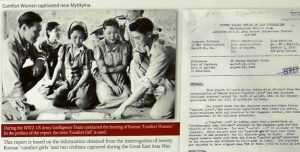
Lee then used three different estimates to arrive at a figure of around 5,000 comfort women originating from Korea. First, he estimated using the number of comfort stations. For this, he used the regional comfort station distribution found in the diary of military physician Colonel Kinbara Setsuzo, as well as the Korean comfort stations in north China—as found in the documents introduced earlier from the governor-general’s branch office.
There were 500 comfort stations. In northern China, there were 100 comfort stations and 1,000 comfort women. So there would have been around 5,000 comfort women in total across 500 comfort stations or around 5,500 comfort women when Japanese and Korean women were counted together.
Second, Lee made a calculation based upon the number of condoms that the military provided to troops. In 1942, the Japanese military provided a total of 32.1 million condoms to its troops—88,000 per day. As seen above, each comfort woman serviced five soldiers on a daily basis. If we accept this, then there would have been a total of 17,600 comfort women—if 20% of these were Koreans, there would have therefore been 3,520 Korean comfort women. If 30% were Koreans, then would have been 5,280 Korean comfort women.
Third, Lee made another calculation based upon the ratio of comfort women to soldiers. Standard notifications put the ratio of soldiers and comfort women at 150 to 1. There were 2.5 million Japanese troops, thus, there would have been 16,000 comfort women. He then hypothesized the turnover rate for comfort women at 1.5 in both Manchuria and China, while it was 0 in the southern area. If true, the total number of comfort women would have been 20,000. If 20% of this number was Korean, there would have been 4,000 Korean comfort women. If 30% were Korean, there would have been 6,000 Korean comfort women.
After outlining these three methods of estimation, Lee further expanded upon his theory there were 4,000 to 6,000 Korean comfort women, saying, “It is completely incorrect to say that there were tens of thousands or hundreds of thousands of Korean comfort women.”
The Trouble with NGO Activities
At the very end of his lecture, Lee said in conclusion:
There would be no end to talking about how this issue has developed over the past 25 years, from 1991 until today. I will end my discussion here. I will not discuss the reality of what kinds of results, and what kinds of problems, NGO activities, and in particular those of Chongdaehyup, have brought about.
I have spoken here about how this issue has developed against the historical background and within the environment of the system of licensed prostitution. I have also shown that, objectively speaking, there are many problems with the numerical estimates and with the extremist view that the comfort women were sex slaves.
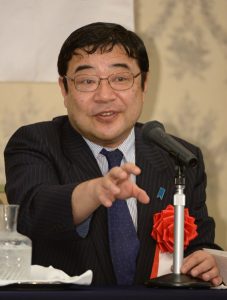
Tsutomu Nishioka is a member of the planning committee at the Japan Institute for National Fundamentals and a visiting professor at Reitaku University. He was born in 1956 in Tokyo, and graduated from the International Christian University. He worked at the Japanese embassy in South Korea as a researcher from 1982 to 1984, and served as editor in chief of monthly magazine Gendai Korea. He is chairman of National Association for the Rescue of Japanese Kidnapped by North Korea (NARKN).
You may like
-


EDITORIAL | Caution In South Korea as Smear Tactics Prevail in Election
-


How the Emerging China-Russia Alliance Uses Military Drills for Geopolitical Grandstanding
-


INTERVIEW | Kim Yung-ho is Seoul's Forward-Thinking Unification Minister
-


South Korea General Election: What Do the Results Mean?
-


Why Give Takeshima Away? A Look at the Real History
-


US-Japan Defense: Smoke and Mirrors or is Something Better Coming?
1 Comment
You must be logged in to post a comment Login
Leave a Reply
Cancel reply
Leave a Reply
You must be logged in to post a comment.



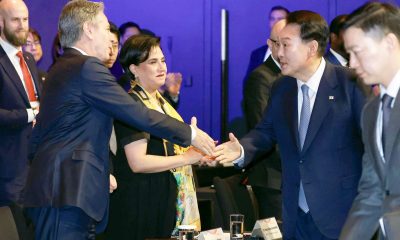



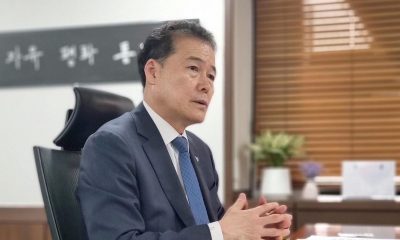

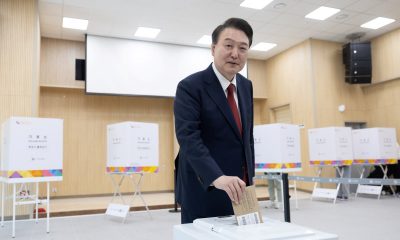

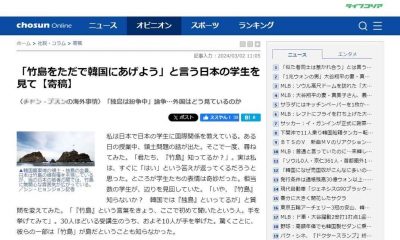

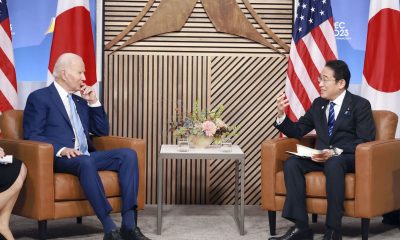



Toshi Hayakawa
November 28, 2017 at 8:04 pm
The Wrong Headline:
A very busy reader goes through,"Estimates Based on Facts: ‘200,000 Comfort Women’ Defies Math,"
and might think, "Okay, you admit slavery. Then, don't fuss with numbers!"
The crux is the lies, not numbers.